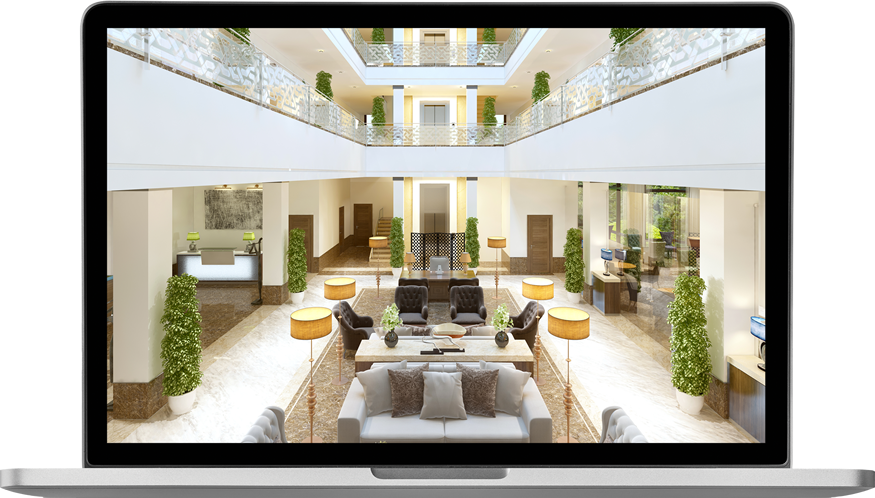A PPC (pay-per-click) campaign is a form of paid advertising in which a hotel targets a keyword to promote their website to a specific set of users. A proper PPC campaign can garner amazing results and level the playing field with massive OTAs and other hospitality websites to keep your hotel competitive in today’s digital market. With an increasing number of consumers using their smartphones and tablet devices for travel information, it is essential a PPC campaign is as mobile-friendly as possible.
It is becoming increasingly important to not only have a mobile-friendly website experience but also to be able to assess the performance and contribution of your mobile landing pages to the successes of specific paid search campaigns.
Landing the Perfect Page
PPC landing pages are built to drive conversions. To achieve better results, your landing page should contain compelling, powerful, and relevant information that relates to your ad while at the same time eliminating distractions such as menus or other navigational links that could steer the user away from the page without converting.
Your landing page should be well optimized for mobile devices. Mobile optimization involves developing a page with responsive design. A responsive theme or template adapts the display of a web page to the visitor’s device, regardless of whether they are using a desktop, tablet, or mobile phone. A mobile-optimized page should also load at optimal speed with the load time figuring anywhere from 1-3 seconds.
Go Mobile, or Go Home
Mobile in marketing only continues to grow more important every year. In 2015, Google reported the number of internet search queries performed using a mobile device had for the first time surpassed that of a desktop. As of June 2018, mobile shared 52.36% of reported web traffic worldwide with 43.8% being desktop and 3.84% tablet devices. Google’s recent rollout of mobile-first indexing further validates this rising trend. Mobile-first indexing means the mobile version of a web page is used rather than the desktop version to index and rank the site on the search engine. Google claims to have made this move to better serve their “primarily mobile” users, reinforcing mobile optimization as deserving of marketers’ time and strategic efforts.
Right Place, Right Time
Improving mobile performance for your brand’s PPC efforts can help you reach mobile users in the right place at the right time. Consider Google’s identified 5 Stages of Travel, for example. Since mobile searches are typically earlier in the path to purchase for booking room nights, your mobile content should provide unique value to these users. Providing high-quality broad-based content can ultimately complement efforts to capture bottom-funnel prospects, with a strong level of intent to book or buy.
#FactCheck
According to our sources over at Google…
- 94% of people with smartphones search for local information on their phones.
- 77% of mobile searches occur at home or at work, places where desktop computers are more likely to be present.
- 70% of hotel searches on mobile are for a specific type of amenity, such as “hotel with an indoor pool” and “hotel with jacuzzi in room”.
- Mobile queries within the travel category increased more than 50% YoY.
- In 2017, 79% of mobile travelers completed a booking after doing research on their smartphone, which is significantly higher than in 2016 (70%).
- 58% of mobile travelers have called to book or to get more information after doing travel research on their smartphone, which is significantly higher than in 2016 (45%).
- 83% of mobile business travelers have booked travel after doing research on their smartphone.
Takeaway: Mobile is critical to your business and will continue to be so. It is vital to make certain visitors can have a good experience when visiting a site or landing page from their mobile device.
Implementation
Go Mobile-Friendly
“Mobile-friendly click rate” is the percentage of mobile clicks that go to a page deemed mobile friendly by Google’s Mobile-Friendly Test. This feature can give you a better sense of how your landing pages are showing up on mobile devices. You can see which pages may not be optimized for mobile devices by clicking on the score in your “Mobile-friendly click rate” column.
Test for Quality Assurance
The quality of your landing page is an important factor contributing to your overall Quality Score. Quality Score is an estimate of the quality of your ads, keywords, and landing pages. Higher quality ads can lead to lower prices and better ad positions. The better your Quality Score, the lower your cost-per-click will be, and the higher value you will get from your campaign.
Ask the following questions when testing the quality of your mobile landing page:
How quickly does the page load?
- 1-3 seconds
- 4-6 seconds?
- 7-10 seconds?
Is the content clear and relevant?
- Very clear, directly related to keywords?
- Fairly clear, indirectly related to keywords?
- Unclear, unrelated to keywords?
Is the CTA (call to action) obvious and easy to act on?
- Clearly identified/easy to access?
- Less distinct/difficult to navigate?
- Hidden/nonfunctional?
Takeaway: On mobile, you will want headlines and a call to action that are short and to the point, clickable phone numbers, and a site that loads immediately.
Get Up to Speed
Users of mobile devices have a limited span of patience, as compared to desktop users. According to a 2017 Google study, the average load time for a mobile landing page is 22 seconds, yet 53% of sessions are abandoned if the page takes longer than 3 seconds to load. To avoid loss of traffic due to slow loading time, think carefully before including images, tracking pixels, and other things that can increase the weight of your pages. Use tools like GTmetrix, Think with Google, and PageSpeed Insights that can help you identify ways to make your site faster, especially on mobile.
Create Accessible Content
Ensure the content of your landing page is mobile friendly. Remember users search more from mobile devices than from desktops. For this reason, it is important for you to address different mobile environments so visitors can find content that displays well on their device. A site that is not mobile friendly creates a frustrating experience for mobile users, and they are even more likely to abandon the site quickly after navigating through the first section of a page or site.
Checklist: PPC Landing Page Mobile Optimization
-
- Ensure page text is legible and all links are tappable for touchscreen devices.
- Minimize visible text through expandable divs, ensuring only the most important points, benefits, or features are prominent.
- Create a collapsible menu to make it easy for visitors to navigate across the entire mobile site.
- Position any call-to-action (CTA) links/buttons above the fold of the page to ensure they are visible when viewed on mobile.
- If phone numbers are shown, verify the number can be called directly with one tap or click.
- Give visitors the ability to navigate directly back to the top when scrolling down the page.
- The size of images should be minimized and the page cached wherever possible to improve landing page load times; this also helps to improve AdWords Quality Score and can ultimately reduce average (cost-per-clicks) CPCs.
Takeaway: Communicate often with landing page developers to verify the design is not only in the interest of your campaign and marketing efforts but also of future visitors.
Mobile-Optimized Landing Page Example
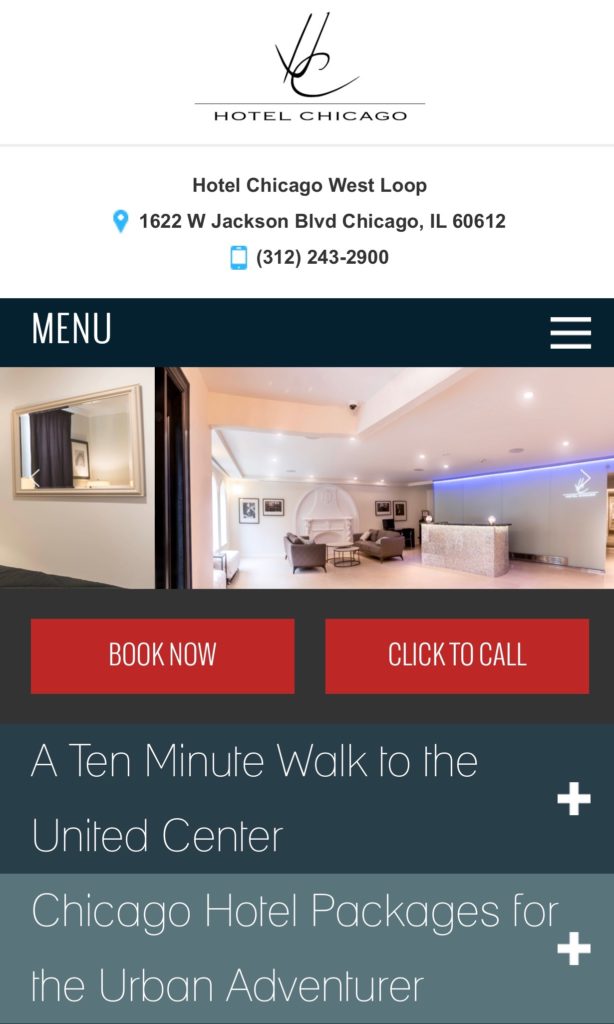
Hotel PPC Mobile Landing Page
The Hotel Chicago West Loop PPC landing page is a great example of mobile optimization. As you can see, the page elements align for clear visibility and responsiveness. The masthead image has been minimized to allow room for ‘Book Now’ and ‘Click to Call’ CTAs. The bulk of the page’s text has been minimized and made accessible through expandable containers.
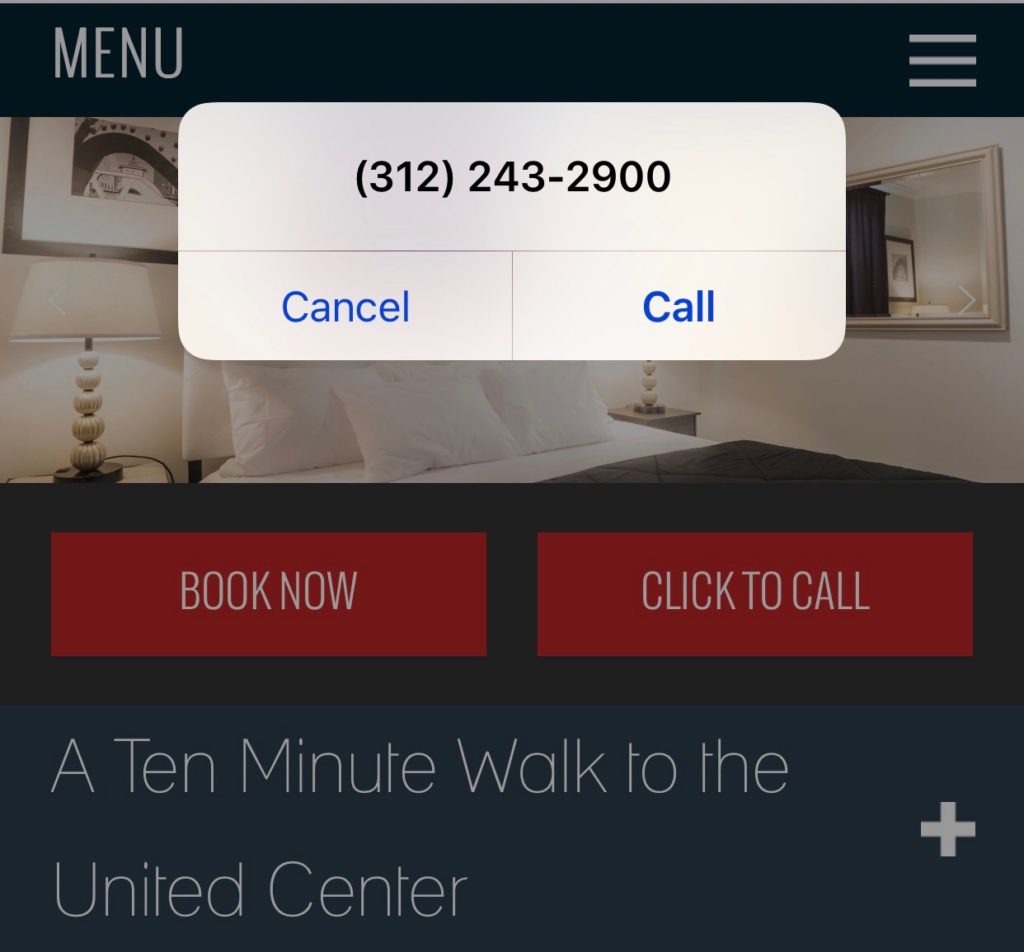
Mobile Click to Call
The click to call functionality is readily available at the top of the page, giving visitors the opportunity to dial out with just a tap or click of the screen.
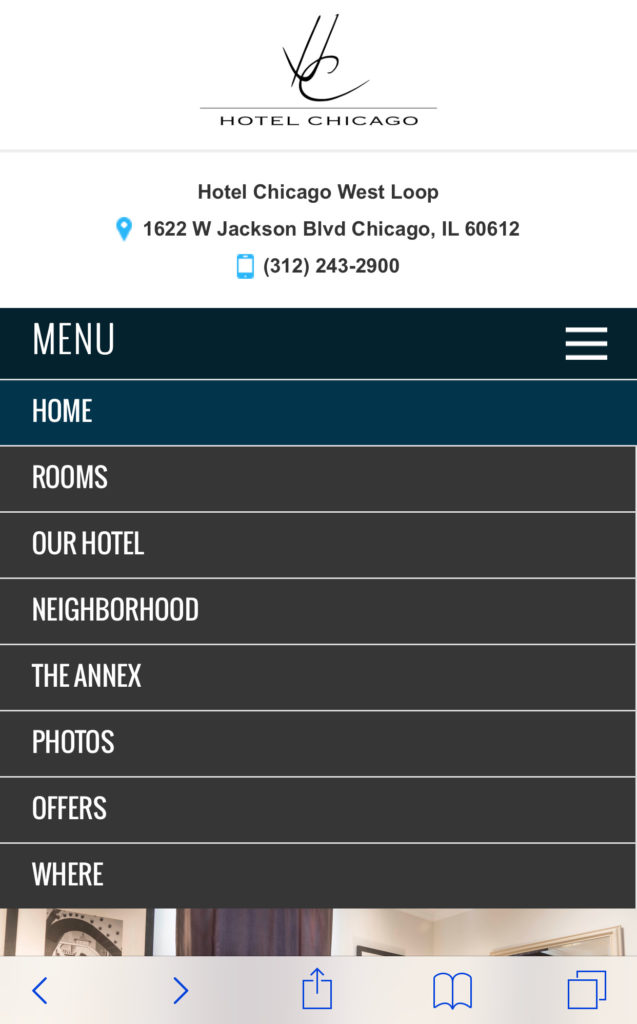
Collapsible Page Menu
To simplify the process of navigating across the entire site, beyond the initial landing page, a condensed menu can be accessed by tapping or clicking on the top right corner of the menu header. The menu is expandable but lives in an idle state of being collapsed to avoid needless distraction.
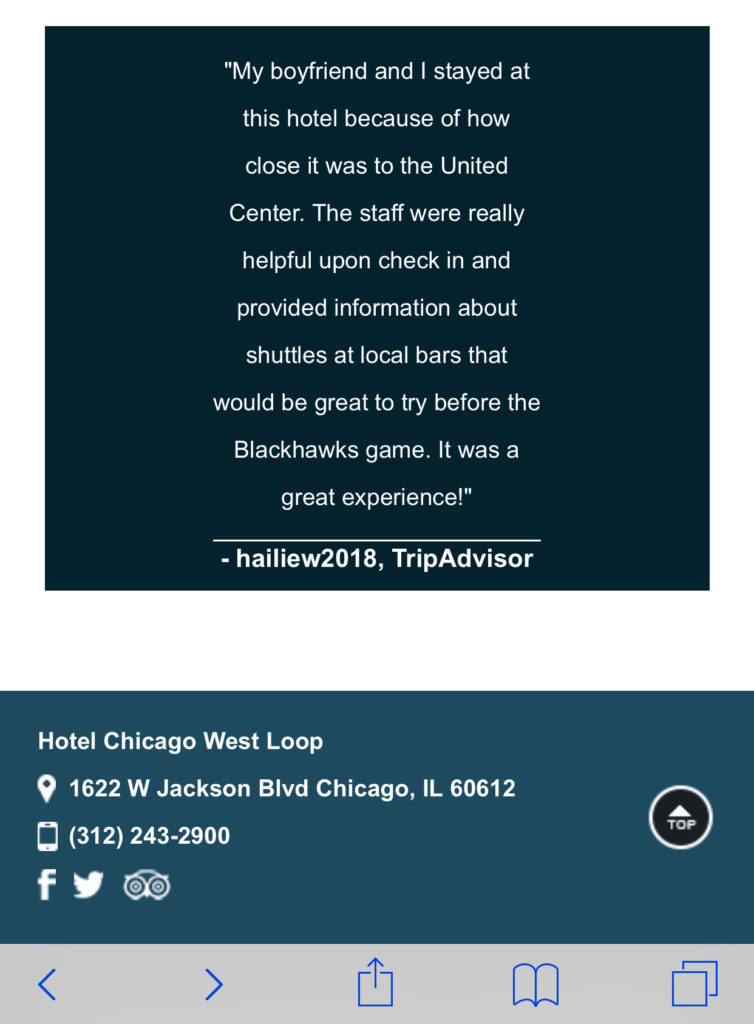
Scroll Back-to-Top Icon
To further enhance the mobile audience experience, a back-to-top anchor appears upon scrolling down to the bottom of the landing page. The clickable icon enables a quick return to the top of the page, letting visitors avoid the time and hassle of manually scrolling back up themselves.
Final Takeaway
Paying attention to small details and following Blue Magnet’s guidelines can make a big difference in increasing mobile conversion rates. When it comes to mobile, you have even less space, and arguably less time in some scenarios, to really grab a user’s attention and guide them to take an action. It is critical to separate the mobile and desktop experiences and understand how users’ behavior varies between the two in order to optimize for conversions. It is also just as important to consider mobile clicks and the overall cost of your PPC campaign. Avoid throwing money down the drain by creating a mobile-optimized user experience that is just as crucial to maximizing PPC ROI.
By understanding how your pages are performing, and which pages are not mobile-friendly, you can prioritize improvements for those pages and convert more ad clicks into sales. Designing your websites to be mobile-friendly can ensure your pages perform well on all devices.
Mobile Value
- – Ask yourself how important mobile is to your business and dig in to find data on how mobile searches have performed historically.
Adjusted Budget
- – If your PPC campaign mobile performance is outstanding compared to desktop, bid higher on mobile.
Optimized Experience
- – Optimize your ad copy to speak to your mobile audience.
Not only does building a unique campaign landing page help increase PPC Ad Rank, it also improves user experience and, ultimately, the conversion rate. Are you ready to take the plunge into paid search advertising? Let Blue Magnet Interactive help you reach targeted and relevant traffic by optimizing your next campaign.
If you found this article useful, then please subscribe to our newsletter or follow us on Facebook and Twitter to avoid missing other useful articles on hotel digital marketing.




